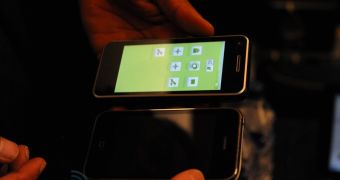The Mobile World Congress closed its gates in Barcelona, but it left behind quite a nice series of new mobile phones, among which we can count an open mobile device from Aava Mobile, which is meant to power next generation smartphones. The company unveiled at the MWC show in Spain a reference design that includes Intel’s next generation Intel Atom processor based platform, codenamed “Moorestown,” designed for the handheld, smartphone and tablet market segments.
According to the company, its device comes with a nice range of features and specifications, making it possible for users to enjoy full PC capabilities on a small form-factor. Among these specs, we can count: - Extended touch screen (full A cover – front cover is touch sensitive) with haptics/vibra feedback - Full HD video capability - Micro USB OTG (also for peripherals like external mouse, keyboard, storage or docking station) - HD video conferencing (front-facing camera with facial and gesture recognition – software dependent) - 2 microphones (echo cancellation) - 3D UI and 3D sound for high-end gaming experience - GSM network (3G) for voice and data - Accelerometer, 3D compass, GPS, Wi-Fi
The devices built on Aava Mobile's solution will be optimized for use with Linux-based operating systems, it seems, and among them we can spot the Android platform from Google, as well as the MeeGo OS recently unveiled as the merger between Nokia's Maemo OS and Intel's Moblin mobile client. The Moorestown processor is expected to prove one of the most powerful ones on the market, and Intel even says it is faster than the ARM Cortex A9 chipset.
Since Aava Mobile brought the handset prototype with it at the MWC show, there are some who took the time to have a closer look at it, such as Engadget, which came up with a series of hands-on photos and with a video of the solution. The UI on the device is said to have displayed a rather poor performance, but the software was certainly not something final, but more like a proof of concept. One way or the other, there are chances that the solution will materialize this year in some powerful smartphones, so have a look at it in the video below.

 14 DAY TRIAL //
14 DAY TRIAL //